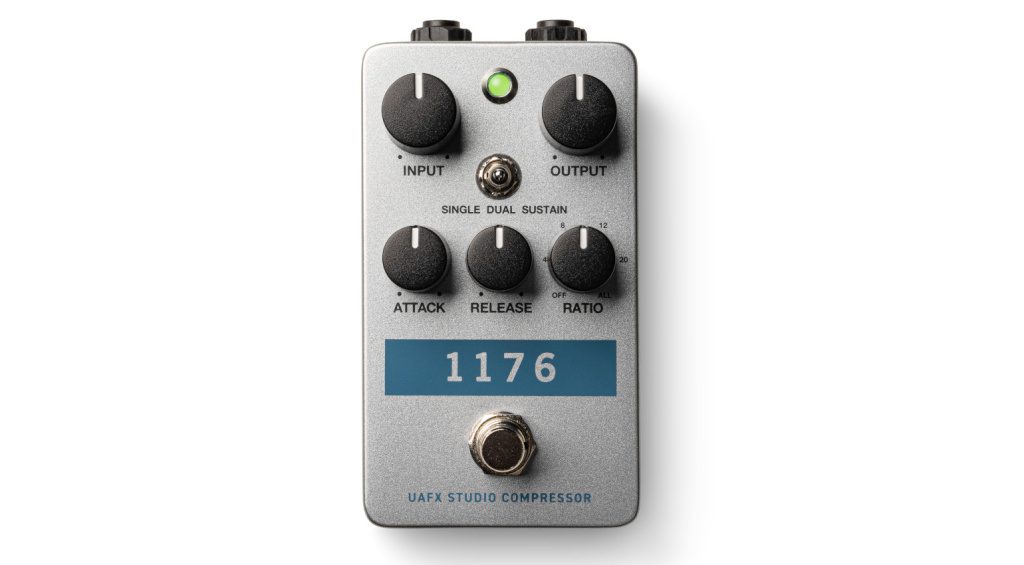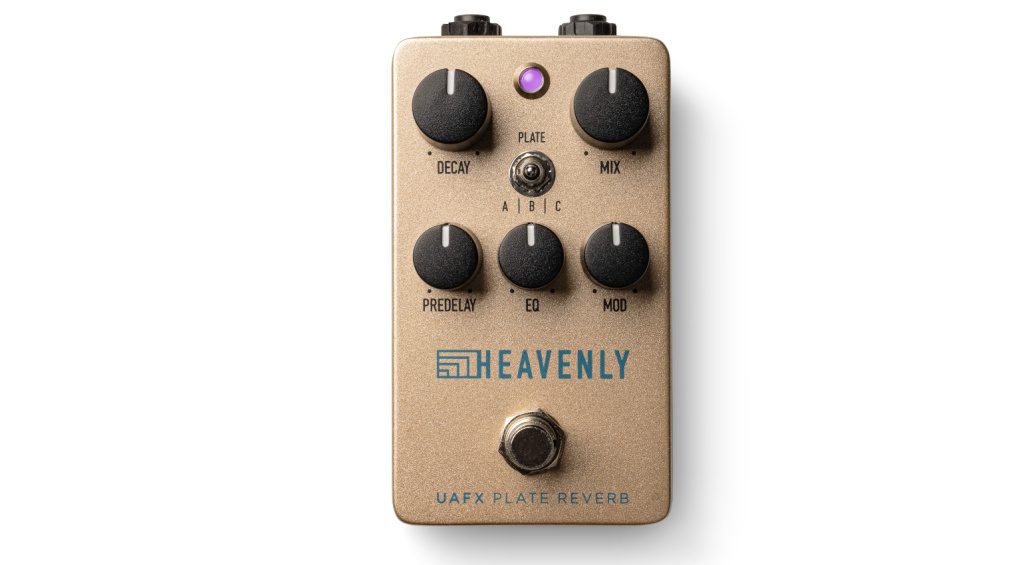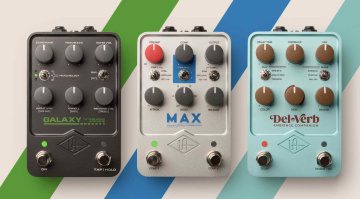UAFX Orion Tape Echo, 1176 and more expands pedal range
The Universal Audio pedal range adds classic, delay, reverbs and a compressor
Universal Audio expands the UAFX range with the new Orion Tape Echo, 1176 Studio Compressor, Heavenly Plate Reverb, and the Evermore Studio Reverb. More Universal Audio compact emulations of classic effects just in time for summer.
Orion Tape Echo
The Orion Tape Echo gives users a rich, emulated vintage tape echo based on the Maestro Echoplex EP-III.
It has what Universal Audio describes as a perfectly captured analogue preamp that allows users to add fat, boosted tones and effects.
With a switch for Mint, Worn and Old tape settings it can emulate a tape echo machine in various states of decay.
Wonk
Plus, the Wonk control for what is described by UA as modulated repeats and vibey tape splice sounds. The pedal has a selectable true/buffered bypass, and preamp on/off as well.
- Order the UAFX Orion Tape Echo from Thomann

1176 Studio Compressor
Next up is the 1176 Studio Compressor which has been designed to deliver the same punchy, expressive tones of the hardware, just in a pedal format.
This compact emulation of the 1176LN Limiting Amplifier could be very handy for a lot of musicians. It offers Single, Dual and Sustain modes, making it great for the guitar.
Control
The controls consist of Input, Output, Attack and Release that UA states are true to the original 1176 hardware. Plus, the Ratio knob includes the infamous “all buttons in” mode for achieving those squashed, gritty textures.
The pedal offers a Parallel compression mode and has a true/buffered bypass option.
- Order the UAFX 1176 Studio Compressor from Thomann

Heavenly Plate Reverb
Modulation
Along with controls for Mod, Pre Delay and EQ controls, which allows users to dial it in to taste. The circuit design once more has a selectable true/buffered bypass, plus an analogue dry-through.
- Order the UAFX Heavenly Plate Reverb from Thomann

Evermore Studio Reverb
Finally, the Evermore Studio Reverb offers grainy ambient trails and modulations based on late-’70s vintage digital hardware.
This one has Room, Small Hall and Large Hall reverbs that are bit-for-bit emulations of this ’70s technology. Expect some grit and vintage-correct Bass, Mid and Treble decay controls.
Luscious
The Mod control also offers lush, grainy “early-digital” textures, which will add more character to the reverbs. And just like the rest of the range, it has selectable true/buffered bypass, short/long pre-delay, and an analogue dry-through.
- Order the UAFX Evermore Studio Reverb from Thomann

More Information
* This post contains affiliate links and/or widgets. When you buy a product via our affiliate partner, we receive a small commission that helps support what we do. Don’t worry, you pay the same price. Thanks for your support!
5 responses to “UAFX Orion Tape Echo, 1176 and more expands pedal range”

You are currently viewing a placeholder content from Facebook. To access the actual content, click the button below. Please note that doing so will share data with third-party providers.
More InformationYou are currently viewing a placeholder content from Instagram. To access the actual content, click the button below. Please note that doing so will share data with third-party providers.
More InformationYou are currently viewing a placeholder content from X. To access the actual content, click the button below. Please note that doing so will share data with third-party providers.
More Information
 3,8 / 5,0 |
3,8 / 5,0 | 












Hmmm, wonder if the 1176 can be used on vocals too?
The problem is, even though latency is low, with multiple pedals, it is cumulative. Four pedals on, four times the latency.
This is where the all in one pedals or racks shine. One input latency no matter how many effects used (or at least well lower). I’d think there’s a good case for a rack UA device with either hardwired combinations, or even better, just slots you can pick and choose which UA effects you want…
“Four pedals on, four times the latency.”
All things being equal, it would be four times the latency from the A/D and D/A converters, not four times the overall latency. And the latency from the converters is very little. For a 44.1 kHz sample rate, a converter would typically have 0.750 ms of latency.
Apollo?
In answer to Diki Ross: I’m not sure latency is an issue with time based effects since they have a lot of the dry analog signal coming straight out and the mix determining how much processed signal is added.